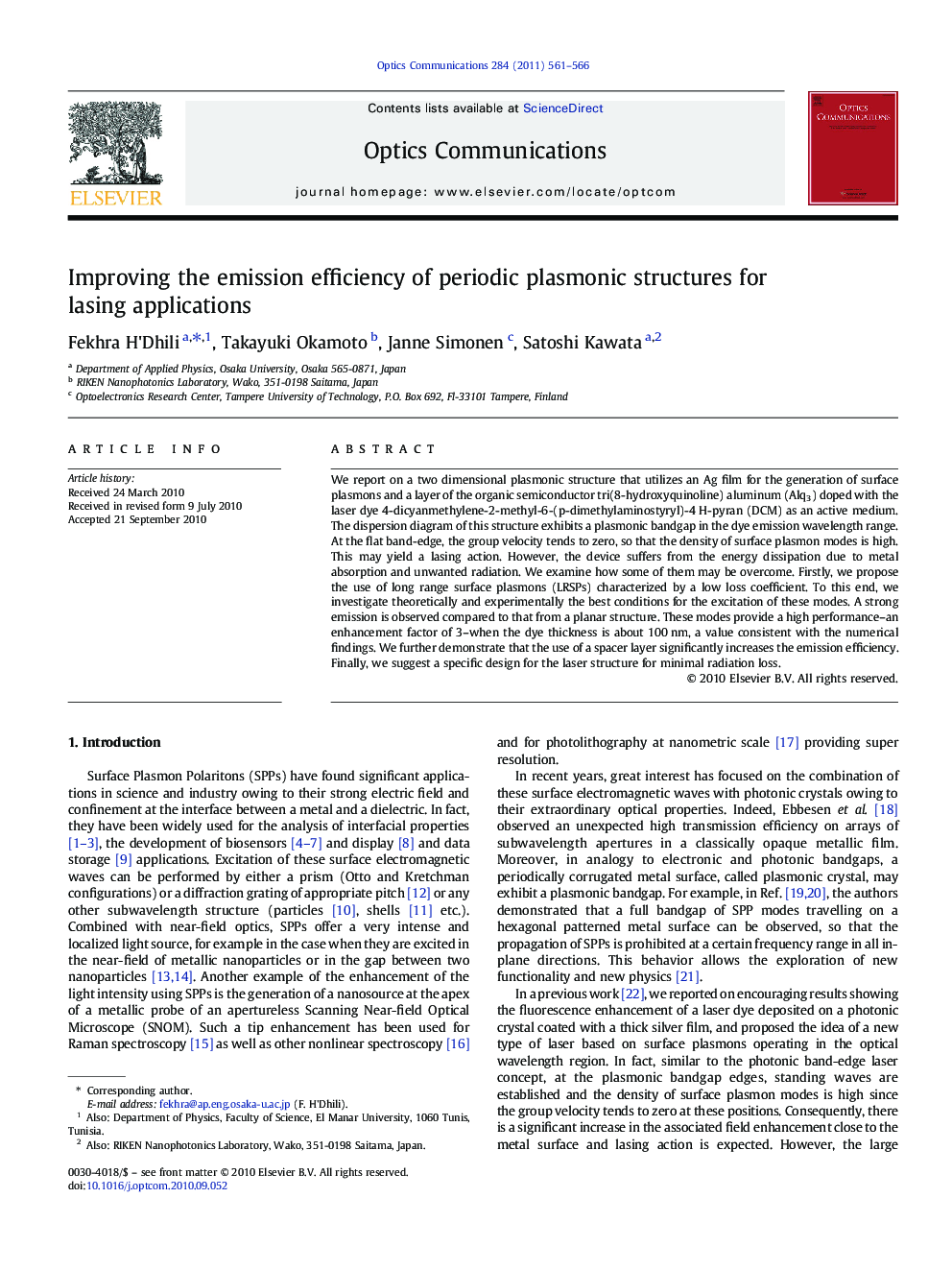| Article ID | Journal | Published Year | Pages | File Type |
|---|---|---|---|---|
| 1537604 | Optics Communications | 2011 | 6 Pages |
We report on a two dimensional plasmonic structure that utilizes an Ag film for the generation of surface plasmons and a layer of the organic semiconductor tri(8-hydroxyquinoline) aluminum (Alq3) doped with the laser dye 4-dicyanmethylene-2-methyl-6-(p-dimethylaminostyryl)-4 H-pyran (DCM) as an active medium. The dispersion diagram of this structure exhibits a plasmonic bandgap in the dye emission wavelength range. At the flat band-edge, the group velocity tends to zero, so that the density of surface plasmon modes is high. This may yield a lasing action. However, the device suffers from the energy dissipation due to metal absorption and unwanted radiation. We examine how some of them may be overcome. Firstly, we propose the use of long range surface plasmons (LRSPs) characterized by a low loss coefficient. To this end, we investigate theoretically and experimentally the best conditions for the excitation of these modes. A strong emission is observed compared to that from a planar structure. These modes provide a high performance–an enhancement factor of 3–when the dye thickness is about 100 nm, a value consistent with the numerical findings. We further demonstrate that the use of a spacer layer significantly increases the emission efficiency. Finally, we suggest a specific design for the laser structure for minimal radiation loss.
